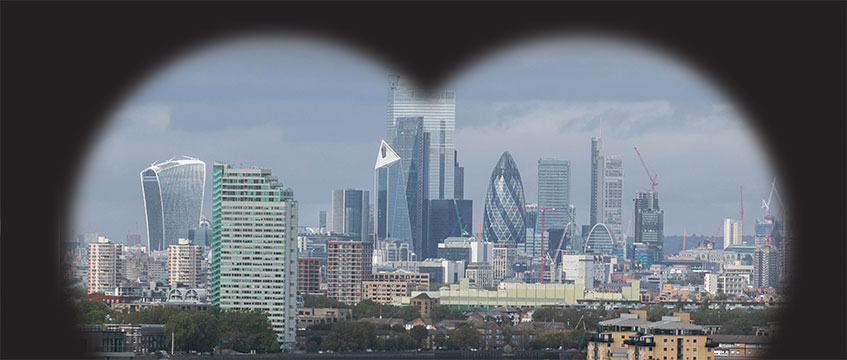Guy Fetherstonhaugh QC makes his annual attempt to discern the legal matters and cases that will affect the real estate world over the coming year.
Property litigation developments in the current pipeline will generate huge interest in our field when the courts come to consider them in 2020. In the usual way, I set out the results of my discussions in chambers as to who will be doing what over the course of 2020. As always, that seems to me to be a pretty good basis for a survey of the property litigation market. The results range across the whole real estate field – from restrictive covenants, through rights of light, to landlord and tenant and telecoms.
Brushing up
We property professionals are so often tied up with questions affecting business and residential occupiers that we sometimes lose sight of the raw law underpinning most property relationships – the stuff that we learned in our land law courses, and then parked. But occasionally, along comes a case that requires us to delve into our academic hinterland. One such is Yuen v Wong, just heard in the First-tier Tribunal (Land Registration), which concerned an allegedly forged transfer of property. It will decide a point on which there is currently no authority, concerning the formalities required for a valid deed.
A similar back-to-basics case is coming up in the Upper Tribunal (Lands Chamber) in the middle of the year in Network Rail v Smoke Club Ltd, on a preliminary issue as to whether the club’s occupation of railway arches is a proprietary interest, or reduces to a periodic tenancy or tenancy at will. Among other questions, it will decide whether, if the parties are negotiating towards a written periodic tenancy, it is possible to infer that a periodic tenancy comes into existence before the written tenancy is signed.
Familiar territory
With those sharpeners under our belts, let us now turn to our old friend, landlord and tenant proper.
The Landlord and Tenant Act 1954 continues to provide sustenance, with four cases coming up for decision. The first, to be heard over five days in the last week of January, is Riley’s Sports Bars (2014) Ltd v CGW Snooker LLP, a High Court case with many points on notices, construction, election not to reinstate, whether the 1954 Act applies when a tenant is out of occupation following a flooding incident because the premises are unfit for occupation, estoppel by silence and, lastly and of most general interest, whether the by now very familiar decision in Franses applies to ground (g), the landlord contending that it wants to occupy the premises for the purposes of its own business.
Then, in April, the Court of Appeal will decide London Kendal St No 3 Ltd v Daejan Investments Ltd [2019] EGLR 43 – the first post-Franses ground (f) case – where the tenant submits that the landlord’s intention was conditional, the landlord having confirmed in evidence that it would not have timed the works to take place within six months of the termination of the tenancy if the tenant had left voluntarily.
Third, in Covent Garden Tenants Association Ltd v Covent Garden Market Authority, which raises a whole series of public law issues concerning the lawfulness of steps taken in relation to a proposed development of the New Covent Garden Market, the authority has now issued ground (f) proceedings against tenants whose units are situated in the next phase of the development. The tenants contend that the authority does not have a realistic prospect of carrying out the proposed works at the end of their tenancies, because the authority will be restrained from doing so by the injunction sought in the main proceedings. The hearing is listed for October.
And finally, for those who get their fun out of disputing notices, the appeal from TFS Stores Ltd v Designer Retail Outlet Centres (Mansfield) General Partner Ltd [2019] EWHC 1363 (Ch); [2019] EGLR 32 will engage the attention of the Court of Appeal on the question whether contracting out notices were properly drafted.
Residential landlord and tenant will not be overlooked either. In Lupin Ltd v Princes Gate Partnership LLP, the County Court at Central London will consider in February 2020 what should happen where: (a) a freeholder grants a lease of a penthouse flat with a covenant not to build on the roof; (b) the freeholder then grants a long overriding lease of the flat to an associated company; (c) the tenant wants a new lease under the Leasehold Reform, Housing and Urban Development Act 1993 with a covenant binding the freeholder not to build on the roof; but (d) the freeholder says that it is not the “landlord” and so cannot be made a party to the new lease.

Agricultural matters
As for agricultural law, we have two cases. In February, the Court of Appeal will decide on the appeal from the High Court in Kingsley v Kingsley [2019] EWHC 1073 (Ch) whether the court was right following the death of a partner to order the sale of his partnership share to the surviving partner rather than selling it on the open market; and whether the surviving partner had continued to occupy the land in her role as partner, notwithstanding the death of the other partner, pending dissolution, with the result that rent was payable to the partnership rather than to the deceased partner’s legatee.
Secondly, Earl of Plymouth v Rees [2019] EWHC 1008 (Ch) will be heard by the Court of Appeal in June. In that case, an agricultural tenancy reserved the right to the landlord to enter the farm for all reasonable purposes. The judge held, contrary to the tenant’s contention that such rights of entry must be narrowly construed, that this allowed the landlord to enter and leave various monitoring devices on the farm as a form of continuing inspection.
Telecoms
There are a number of issues under the Electronic Communications Code that are likely to trouble the higher-level courts in 2020.
Application has been made for permission to appeal to the Supreme Court to review the issues decided in Cornerstone Telecommunications Infrastructure Ltd v Compton Beauchamp Estates Ltd [2019] EWCA Civ 1755; [2019] PLSCS 201; while in Cornerstone Telecommunications Infrastructure Ltd v Ashloch Ltd [2019] UKUT 338 (LC); [2019] PLSCS 216, application has been made to leapfrog to the Supreme Court the question whether paragraph 20 of the Code can be used in the case of an existing 1954 Act lease. If permission is not granted, then there will instead be a trip to the Court of Appeal.
In the meantime, the consequences of those decisions will have to be litigated in the county courts under the Landlord and Tenant Act 1954 (for example, in the upcoming EE/H3G v APW), and it remains to be seen what the outcome of section 34 valuations under that Act will be, though it seems likely that they will fall into line with paragraph 24 consideration under the Code.
Property rights
Back to property, this time of the real variety. Tribunals at all levels will decide restrictive covenant cases, as part of a growing corpus of disputes concerned with the intensification of land use. First, at the beginning of the year in Edgware Road (2015) Ltd v The Church Commissioners for England, the Upper Tribunal will decide whether to modify a use covenant in a long lease of a property on the Hyde Park Estate, to allow use as a hotel.
Next, in its first case concerning the interpretation of section 84 of the Law of Property Act 1925, the Supreme Court will in July hear the appeal in Alexander Devine Children’s Cancer Trust v Millgate Developments Ltd and another [2019] EWCA Civ 2679; [2019] EGLR 7 as to whether it was “contrary to the public interest” for houses erected in breach of a restrictive covenant to be demolished or left empty.
And finally, in Bath Rugby Ltd v Greenwood, the High Court will be asked to decide whether a covenant made in 1922 concerning the use of the Recreation Ground in Bath has any current effect.
Rights of light were subjected to judicial scrutiny in 2019 in Beaumont Business Centres Ltd v Florala Properties Ltd, in a dispute raising many questions as to the extent of interference, and whether an injunction is the appropriate remedy. The substantive determination of the High Court is awaited.
A claim for an injunction restraining a different form of alleged nuisance – in that case from one said to reside in a right of privacy – was heard in November 2018 in Fearn v Board of Trustees of the Tate Gallery. The court was asked to rule whether the claimant flat owners had any cause of action, in nuisance or otherwise, in circumstances where visitors to the Tate Modern public viewing gallery are able to view (among other things) the claimants’ flats. The judgment of Mann J dismissing the claim was given in February 2019. The Court of Appeal gave permission to appeal, and the appeal is to be heard in January.
These are the cases in which I and members of my chambers are principally involved. There are many others. 2020 will be another interesting year.
Guy Fetherstonhaugh QC is a barrister at Falcon Chambers











